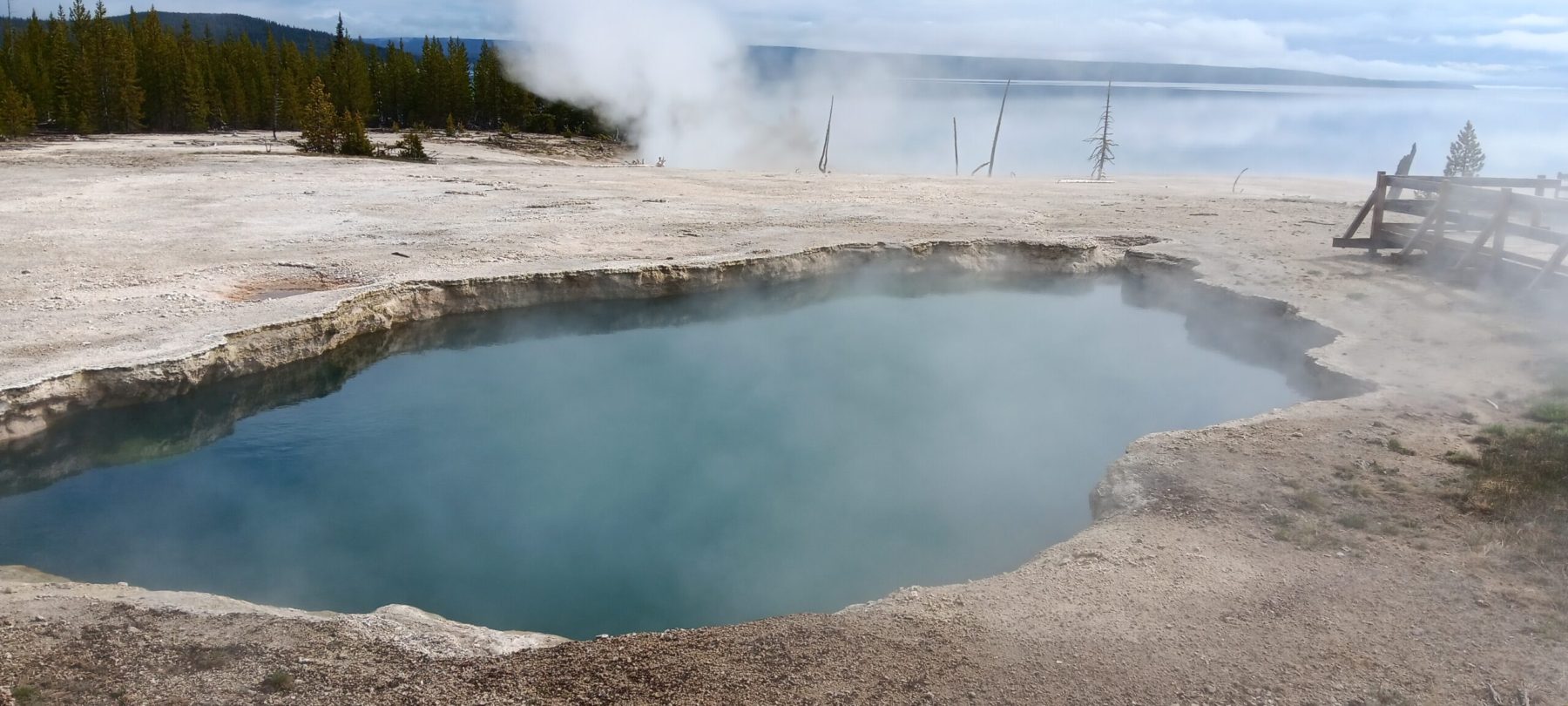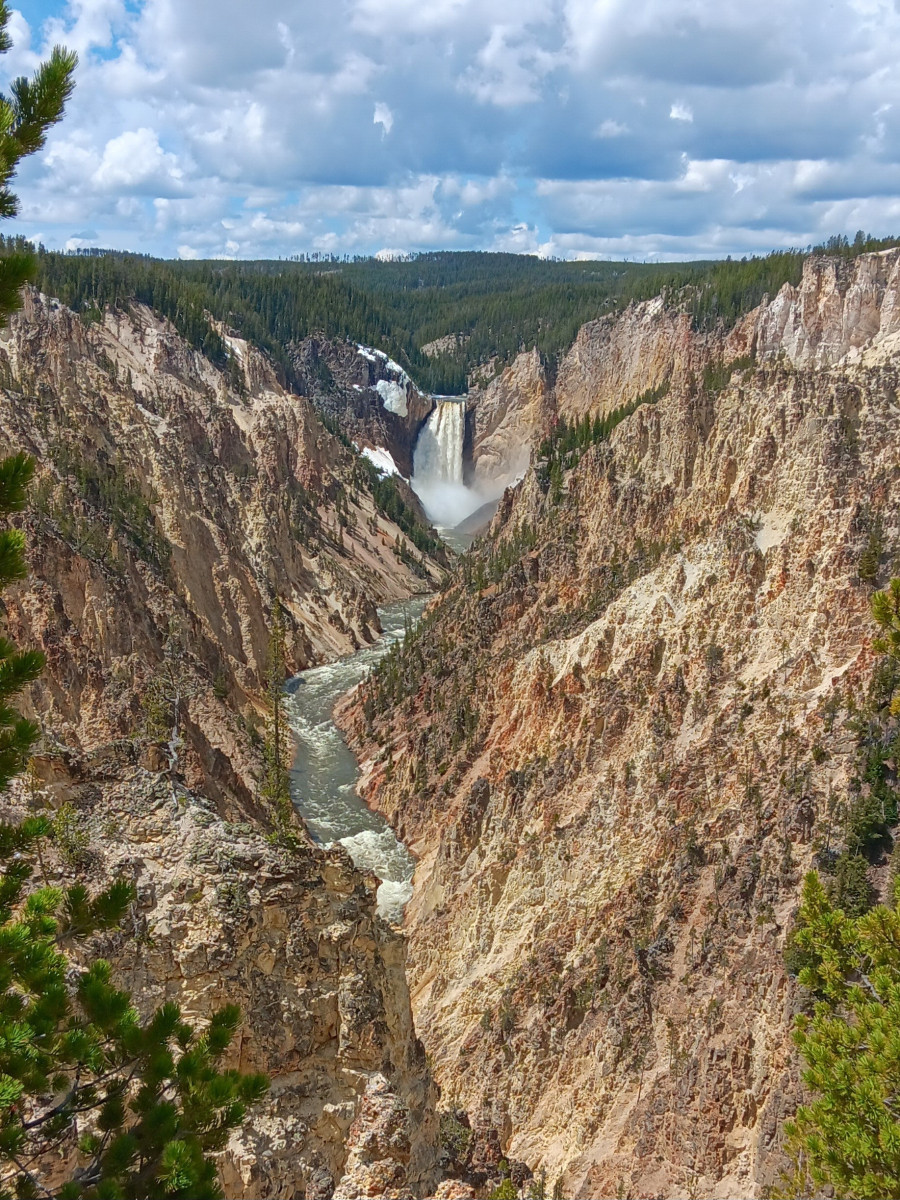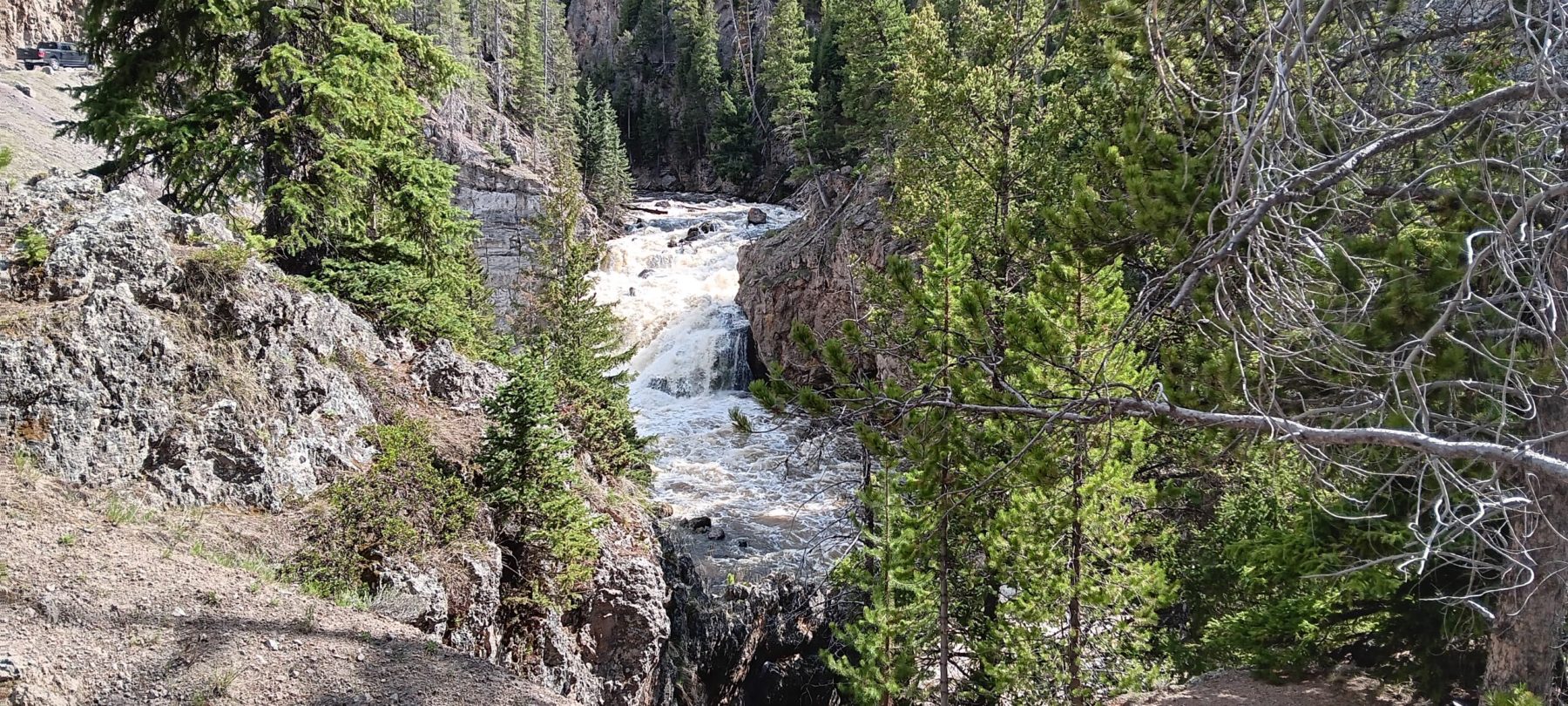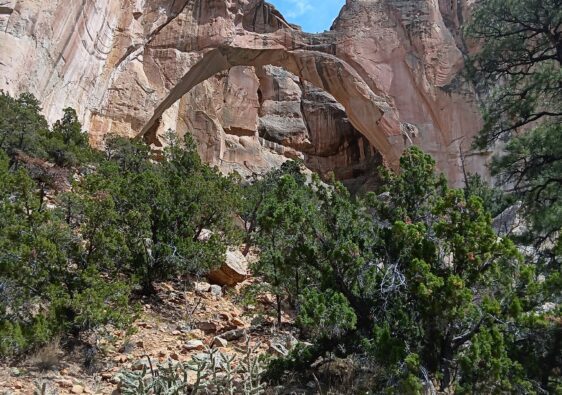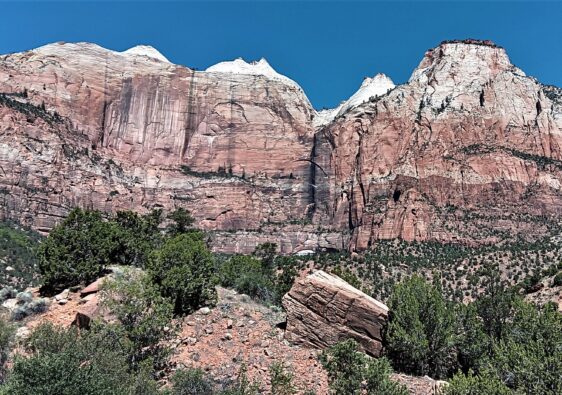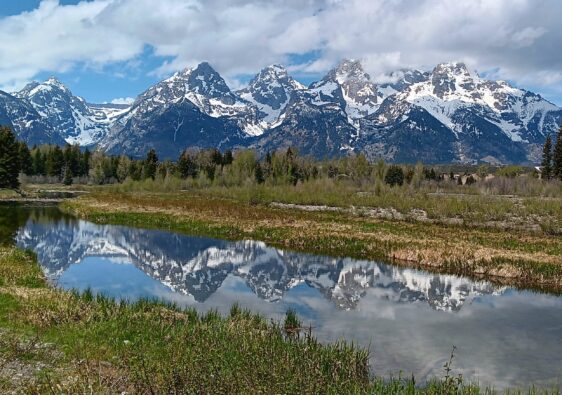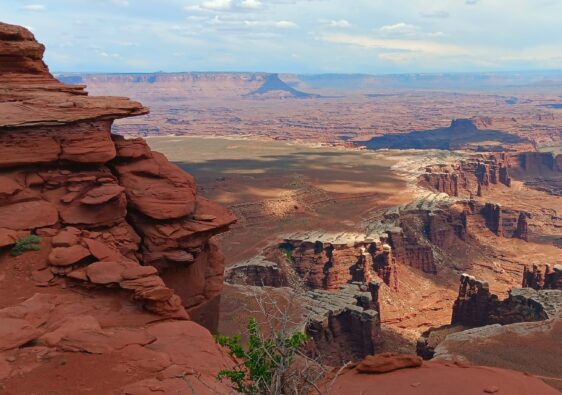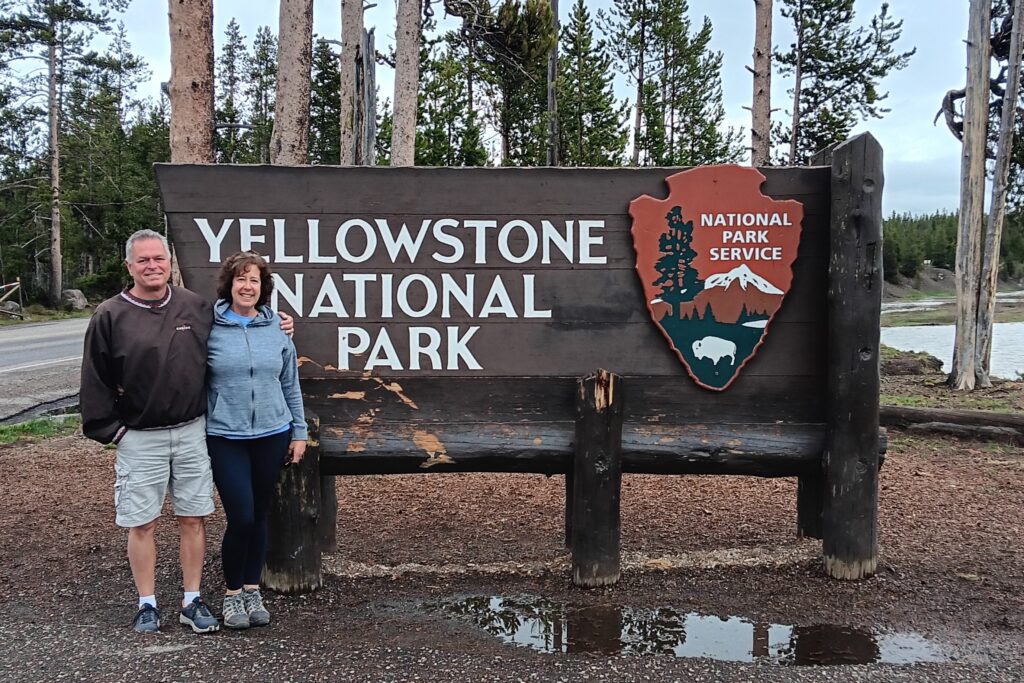

Almost everywhere you look, you can see evidence of an ancient volcano in Yellowstone National Park. At over 3500 square miles, Yellowstone is twice the size of Rhode Island and over 4 million people visit each year. We chose to go just before Memorial Day weekend, which is about the time that the park fully opens for the season. Some areas were still closed because of the vast amount of snow that the area received over the winter but our days were very full of wonderful new experiences
Yellowstone is the oldest National Park in the country, founded 151 years ago on March 1st, 1872. It is also the world’s first National Park. We spent three days exploring the parks geothermal features, gorgeous scenery, and seeing wildlife we had never seen before.
Yellowstone sits on a volcanic hotspot, with almost half the world’s active geysers. We saw geysers, hot springs, mudpots, and fumarols throughout the park, although most are concentrated in the following areas:
- West Thumb Geyser Basin
- Upper Geyser Basin (Old Faithful and many others)
- Middle Geyser Basin (Grand Prismatic Spring)
- Lower Geyser Basin (Fountain Paint Pots)
- Norris Geyser Basin
- Mammoth Hot Springs Travertine Terraces
Hot springs are the most common geothermal feature in the park. The water is heated by subterranean magma and some are even boiling hot. The hotter pools are usually a brilliant blue in the center.
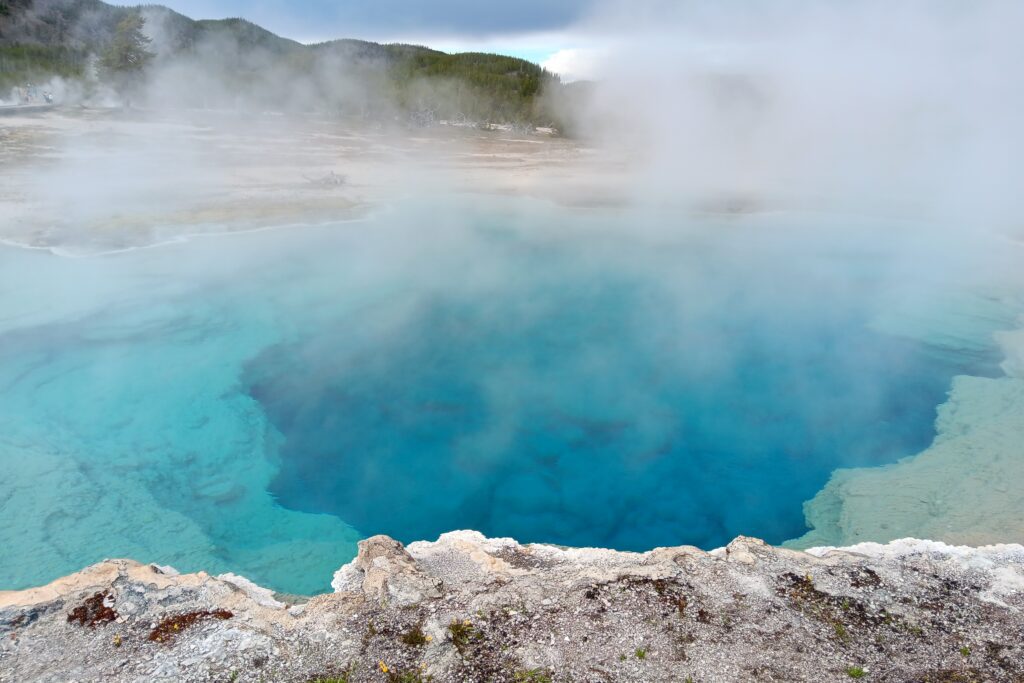

Believe it or not, there is actually life in the hot springs! Organisms known as thermophiles (heat loving bacteria) are what causes the hot springs to have such a variety of colors on the edges.
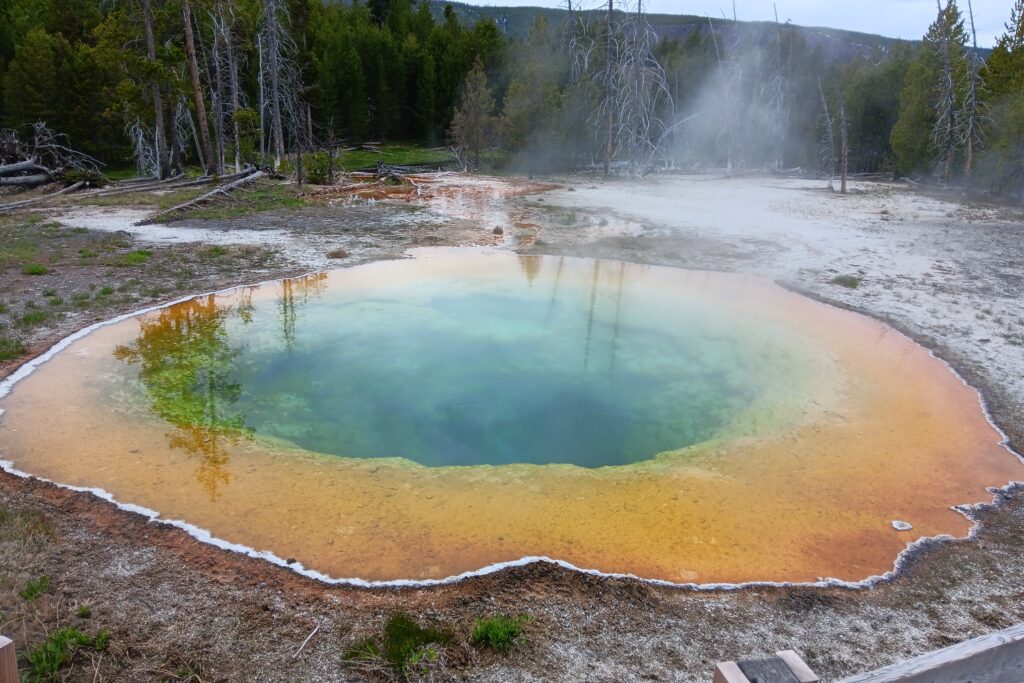

All geysers are hot springs but not all hot springs are geysers. Geysers erupt with steaming hot water. Some are very predictable, like Old Faithful, which erupts 21 to 23 times per day. We got to witness one of those eruptions. Other geysers are not easy to predict, with some even going dormant for years or centuries before suddenly erupting again. Some of these geysers spew water higher than Old Faithful, but they erupt infrequently and unpredictably.
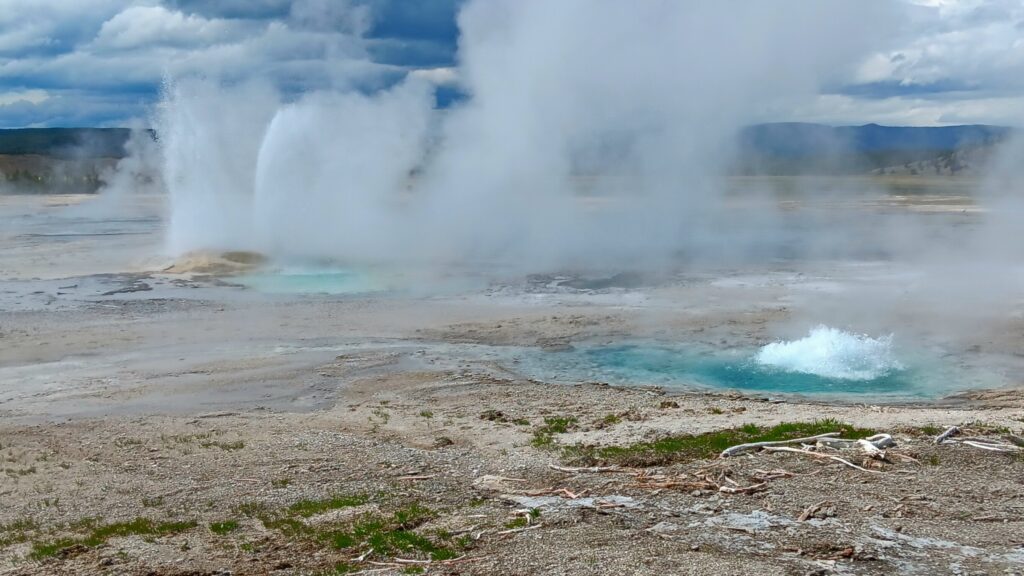

Fumaroles are hot steam vents and are throughout the park. One area, called Roaring Mountain, was said to have been named that because once, in the 1800’s, it’s steam vents were heard 4 miles away. When we visited, you could only hear a gentle hissing.
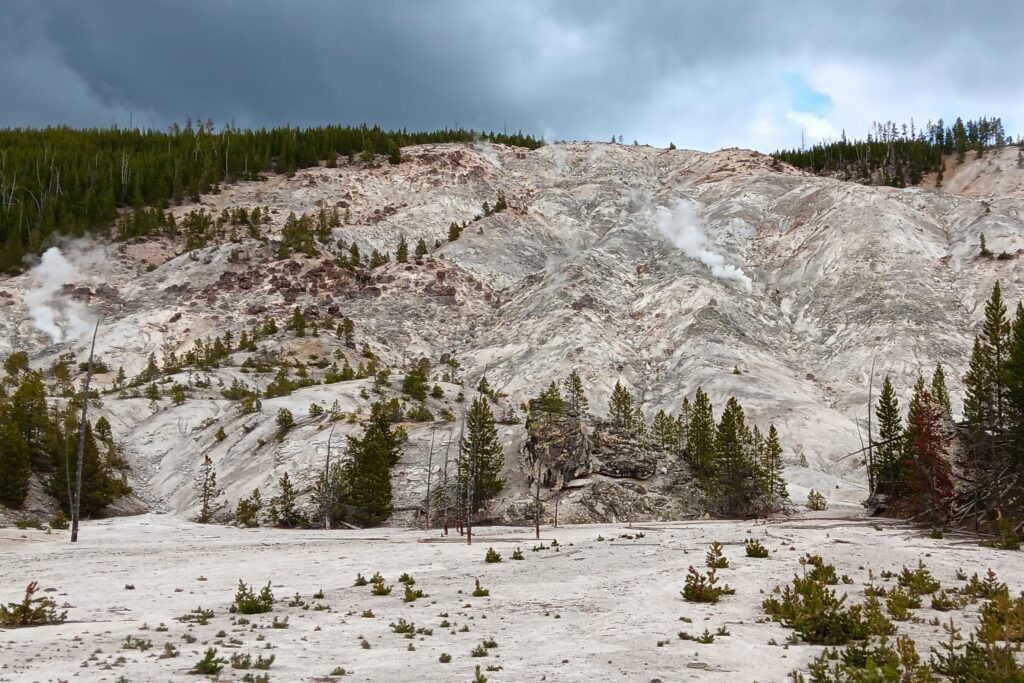

Mudpots are particularly interesting because the acid from volcanic gases dissolves the rock, which combines with water to form mudpots, looking like paint bubbling. Some have very pretty colors, depending on the composition of the rock that was dissolved.
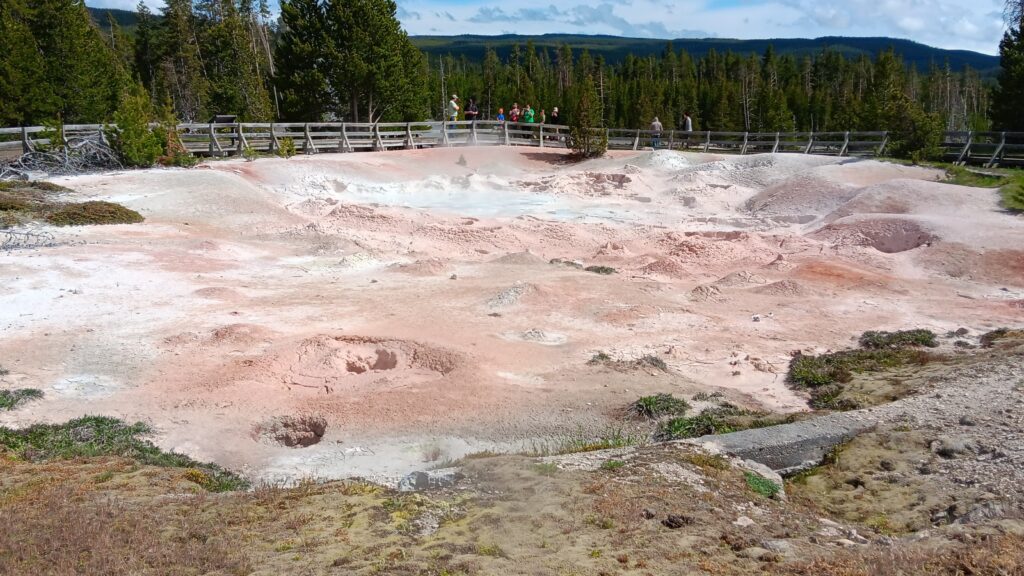

There are wooden boardwalks throughout the hot springs areas because the grounds surrounding them are also thermic and potentially dangerous to walk on. In addition, the boardwalks keep people from getting too close to the hot springs and geysers, in order to protect these geological features.
I had a hard time choosing pictures to share with you because all of the geothermal features were so fascinating. I hope you enjoy the following slideshow.
The geothermal features are not all that the park has to offer. Within this vast area is breathing scenery and wildlife everywhere. There are over 1000 miles of hiking trails, and, as you know, we love hiking, but with just three days to see all the major sights (remember, twice the size of Rhode Island), we mainly walked the boardwalks and other paved paths. If we get back here, we would definitely spend a few extra days to get some hiking in. We put a lot of miles on the car within this park, driving every main road and a few side roads.
Grand Canyon of the Yellowstone
The Grand Canyon of the Yellowstone is a 24 mile long canyon on the Yellowstone river. It is between 800 and 1,200 ft deep and a quarter mile to three quarters of a mile wide. There are several viewpoints for the canyon, including the upper and lower falls. The canyon is truly spectacular, with some colors influenced by the geothermal activity in the area.
Lamar Valley, Hayden Valley, Dunraven Pass
Lamar Valley and Hayden Valley feature spectacular views and abundant wildlife.
The road through Dunraven Pass opened on our last day in the park. You reach an altitude of almost 9000 feet and drive by Mount Washburn which is over 10,000 feet. There are incredible views along this road and some bison can be seen too at this elevation.
Wildlife in Yellowstone
While we saw bison, North American Pronghorn, elk, three grizzlies, and a wolf, you would need a camera with a very large telephoto lens to actually get a good picture. You are advised to stay at least 2 bus lengths away from most wildlife and at LEAST 300 yards from grizzlies and wolves. We saw hundreds of bison, however, and even got some closeups from the car during a Bison traffic jam. They even hang out in parking lots and in front of people’s houses, as you’ll see from the following slideshow.
Fun fact about Bison: both male and female have horns

